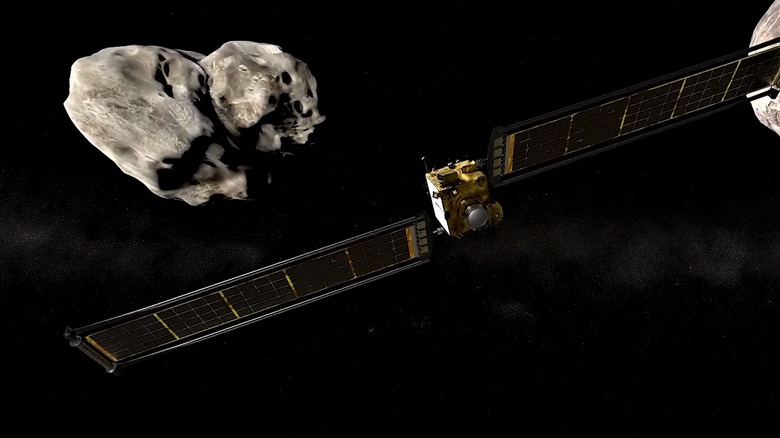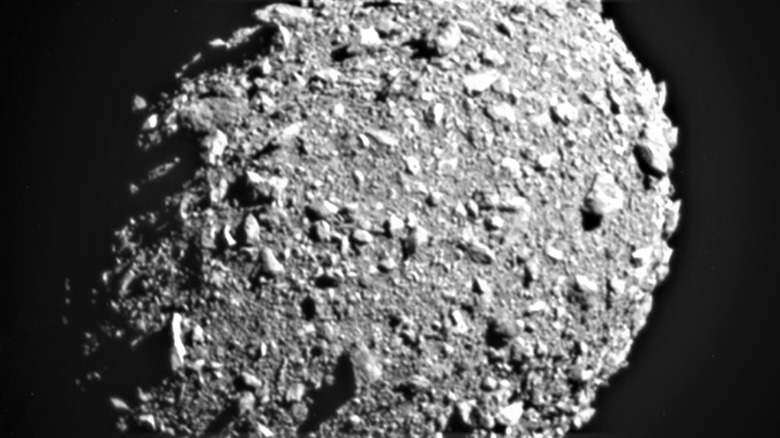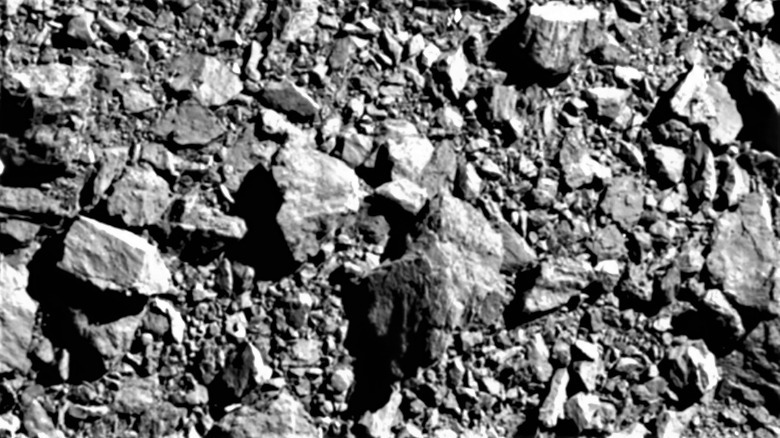The Last Thing This $300 Million NASA Spacecraft Saw
NASA's multimillion-dollar program ended in the deliberate crash of a spacecraft onto a massive structure over fifty times its size. The Double Asteroid Redirection Test (DART) program is regarded as NASA's first-ever space mission of its kind. It focuses primarily on testing out planetary defense measures against potential threats like asteroids. In 2017, DART went from concept to preliminary design phase (via NASA). However, the space agency didn't exactly intend its DART spacecraft to obliterate asteroids, but rather, it was meant to determine how to efficiently nudge them towards the right direction — which is away from Earth.
The DART impactor spacecraft was built to do exactly what its name suggests: slam itself into an asteroid in an attempt to redirect its target's course, all while recording the results of its impact. NASA explained that its vending machine-sized spacecraft would be hitting an asteroid as big as the Great Pyramid head-on at 15,000 mph. The DART mission launched in 2021, with its predicted asteroid impact targeted for September the following year. The result? It would mean this compact spacecraft's inevitable demise, but not without it gathering some vital data in the process. So, what exactly did the DART spacecraft see before making contact with its colossal target?
NASA's DART spacecraft had a rocky final encounter
The DART impactor spacecraft didn't leave Earth empty-handed; it carried solar panels, a visual navigation system called Didymos Reconnaissance and Asteroid Camera for Optical navigation (DRACO), and a Light Italian CubeSat for Imaging of Asteroids (LICIACube) for transmitting recorded images back to NASA, among others. Fortunately, its onboard instrumentation was able to record its final moments with the pyramid-sized asteroid Dimorphos. A timelapse video revealed by NASA shows the DART spacecraft inching closer to the asteroid. This gave detailed glimpses of Dimorphos' rocky surface up close as the spacecraft approached before eventually going offline shortly afterward. The spacecraft's final image was taken right before impact, leading to an incomplete close-up of the asteroid's rough terrain.
Of course, the tumultuous asteroid encounter did come at a price. The space agency estimated the cost of simply launching the DART spacecraft using SpaceX's Falcon 9 rocket to be almost $70 million, via a press release. Development of the spacecraft alone was said to cost roughly $308 million, according to the non-profit organization The Planetary Society. In the end, the mission was an expensive yet successful demonstration of the world's first planetary defense system in action. While it's certainly a costly affair, at least it produced results, not to mention some neat footage from the DART spacecraft as it was being deliberately decommissioned.


